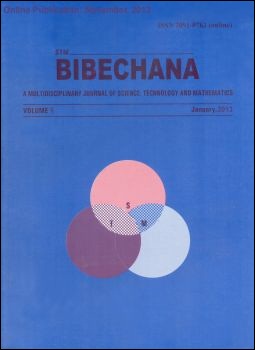The effect of tantalum addition on the corrosion behavior of W-xTa alloys in 1 M NaOH solution
DOI:
https://doi.org/10.3126/bibechana.v10i0.8363Keywords:
Sputter-deposited W-xTa alloys, Corrosion rate, Corrosion potential, NaOH solution, Electrochemical measurementAbstract
The role of tantalum addition on the corrosion behavior of the sputter-deposited nanocrystalline and amorphous W-xTa (x=8-77) alloys was studied in 1 M NaOH solution open to air at 25°C using corrosion tests and electrochemical measurements. Tungsten and tantalum metals act synergistically in enhancing the corrosion resistant properties of the W-xTa alloys and hence addition of 23 at% or more tantalum to the alloys were found to be effective to lower the corrosion rate of the alloys than those of alloy-constituting tungsten and tantalum elements. The corrosion rates of the W-xTa alloys containing 23-77 at% tantalum are nearly two orders of magnitude lower than that of tungsten and even slightly lower than that of tantalum in 1 M NaOH. Addition of tantalum metal in W-xTa alloys is effective for ennoblement of the open circuit corrosion potential of the tungsten metal in 1 M NaOH solution 25°C.
DOI: http://dx.doi.org/10.3126/bibechana.v10i0.8363
BIBECHANA 10 (2014) 1-8
Downloads
Downloads
Published
How to Cite
Issue
Section
License
This license enables reusers to distribute, remix, adapt, and build upon the material in any medium or format for noncommercial purposes only, and only so long as attribution is given to the creator.




